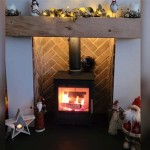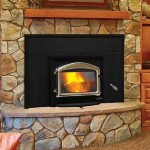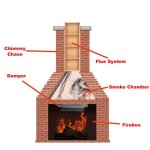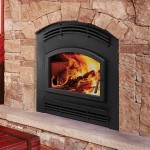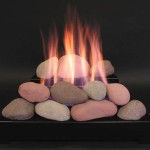Victorian Cast Iron Fireplace Insert: A Timeless Elegance
The Victorian era, spanning from 1837 to 1901, witnessed remarkable advancements in technology and design. Among the period's most enduring and aesthetically pleasing creations are Victorian cast iron fireplace inserts. These inserts, designed to be fitted into existing fireplace openings, not only provided efficient heating but also served as prominent decorative features within Victorian homes. Their intricate designs, durable construction, and contribution to interior ambiance continue to make them highly sought after by homeowners and collectors today.
The use of cast iron as a primary material for fireplace inserts was a direct result of the Industrial Revolution. The mass production capabilities of foundries made cast iron readily available and relatively inexpensive, allowing for the creation of elaborate and ornate designs that would have been prohibitively expensive to produce using traditional methods. This accessibility, combined with the growing demand for effective and stylish heating solutions, fueled the popularity of Victorian cast iron fireplace inserts.
Victorian fireplace inserts weren't simply functional heating appliances; they were carefully crafted works of art designed to reflect the prevailing aesthetic sensibilities of the era. They embodied the Victorian penchant for ornamentation, detail, and a sense of opulence, transforming the fireplace from a purely utilitarian feature into a focal point within the room. The designs often incorporated elements of nature, classical motifs, and geometric patterns, creating a visual richness that enhanced the overall character of the interior.
Key Features and Design Elements
Victorian cast iron fireplace inserts are characterized by a variety of distinctive features that contribute to their unique appeal. These elements reflect the diverse design influences of the period and the craftsmanship involved in their production.
Ornate Detailing: A hallmark of Victorian design is the abundance of decorative elements. Fireplace inserts are typically adorned with intricate castings depicting floral arrangements, scrolls, mythological figures, and geometric patterns. The level of detail can vary considerably, with some inserts exhibiting highly elaborate designs that showcase the skill of the foundry workers. The decorative motifs often reflect the prevailing artistic trends of the time, such as the Gothic Revival, the Rococo Revival, and the Aesthetic Movement.
Materials and Finishes: While cast iron is the primary material, other materials, such as tiles, brass, and enamel, were often incorporated to enhance the visual appeal and functionality of the inserts. Tiles were frequently used to line the firebox, providing a heat-resistant surface and adding color and pattern. Brass was used for trim, handles, and decorative accents, adding a touch of elegance and contrasting with the darker tones of the cast iron. Enamel finishes were sometimes applied to the cast iron to create a glossy, durable surface and to introduce vibrant colors into the design.
Arched Openings and Surrounds: The firebox opening is frequently arched, a design element that evokes classical architecture and adds a sense of grandeur. The arch is often framed by an elaborate surround, which may consist of decorative moldings, fluted columns, or sculpted panels. The surround served to accentuate the firebox opening and to create a visually appealing transition between the insert and the surrounding wall. Some surrounds are integral to the cast iron insert itself, while others are crafted from wood or marble and installed separately.
Integrated Grates and Fenders: Victorian fireplace inserts typically include an integrated grate for holding the fuel and a fender to prevent embers from escaping onto the hearth. The grates are often made of cast iron and are designed to allow for efficient airflow, promoting combustion. The fenders can be simple or highly ornate, and are often made of cast iron or brass. They serve a practical purpose by containing the fire but also contribute to the overall aesthetic appeal of the fireplace.
Functionality and Heating Efficiency
Beyond their aesthetic qualities, Victorian cast iron fireplace inserts were designed to provide efficient and reliable heating. While not as sophisticated as modern heating systems, they were a significant improvement over open hearths, which were notoriously inefficient and produced considerable smoke and soot.
Improved Heat Radiation: Cast iron is an excellent conductor of heat, allowing the insert to radiate heat into the room effectively. The large surface area of the cast iron insert, particularly when adorned with elaborate castings, further enhances its heat radiating capacity. This enables the insert to distribute heat more evenly throughout the room compared to an open fire.
Controlled Airflow: Victorian fireplace inserts typically incorporate dampers and vents that allow for controlled airflow. By adjusting these controls, homeowners could regulate the rate of combustion and the amount of heat produced. This feature allowed for greater control over the heating process and helped to improve fuel efficiency. Effective control prevents excessive heat loss up the chimney.
Reduced Smoke and Soot: Compared to open hearths, Victorian fireplace inserts produced less smoke and soot. The enclosed firebox and controlled airflow helped to promote more complete combustion, reducing the amount of pollutants released into the room and the atmosphere. This not only improved indoor air quality but also reduced the build-up of soot on walls and furnishings.
Safety Considerations: While Victorian fireplace inserts offered several advantages over open hearths, it's important to note that they still posed certain safety risks. The use of flammable fuels, such as wood and coal, required careful handling and storage. The risk of fire was ever-present, and proper ventilation was essential to prevent carbon monoxide poisoning. Regular cleaning and maintenance were also necessary to ensure the safe and efficient operation of the insert.
Restoration and Modern Adaptations
Many original Victorian cast iron fireplace inserts survive today, often requiring restoration to return them to their former glory. The restoration process typically involves cleaning, repairing damaged castings, and refinishing the surface. The goal is to preserve the historical integrity of the insert while ensuring its safe and functional operation.
Cleaning and Repair: The first step in restoring a Victorian fireplace insert is thorough cleaning to remove accumulated soot, rust, and grime. This can be done using a combination of mechanical methods, such as wire brushing and scraping, and chemical cleaners. Once the insert is clean, any damaged castings are repaired using welding or epoxy resins. Missing or broken parts may need to be fabricated or sourced from antique dealers.
Refinishing: After the repairs are complete, the insert is refinished to protect the cast iron from rust and to enhance its appearance. Traditional finishes include stove black, which creates a matte black surface, and enamel, which provides a glossy, durable finish. The choice of finish depends on the desired aesthetic and the intended use of the insert.
Modern Adaptations: While original Victorian fireplace inserts can be used as functioning fireplaces, some homeowners choose to adapt them for use with gas or electric inserts. This allows them to enjoy the aesthetic appeal of a Victorian fireplace without the hassle and mess of burning wood or coal. Gas and electric inserts offer convenient and efficient heating options, and they can be easily installed in existing fireplace openings.
Victorian cast iron fireplace inserts represent a significant chapter in the history of heating and interior design. Their enduring appeal lies in their combination of functionality, craftsmanship, and aesthetic elegance. Whether restored to their original glory or adapted for modern use, these inserts continue to add warmth, character, and a touch of Victorian charm to homes around the world.

Normandy Cast Iron Tiled Insert 40 Victorian Fireplace

Tradition Cast Iron Fireplace Insert 38 Victorian

Victorian Cast Iron Fire Surround And Tiled Insert

A Mid Victorian Cast Iron Fireplace Insert Lassco England S Prime Resource For Architectural Antiques Salvage Curiosities

The Ce Lux Is A Victorian Style Cast Iron Fireplace Insert By Carron Ace Reclamation

Windsor Electric Fireplace Or Insert

Victoria Highlight Arched Cast Iron Fireplace Insert Bonfire

Antique Fireplaces Full Circle Architectural Antiques

Lytton Cast Iron Fireplace Insert 37 Victorian

Carron Cast Iron Fireplaces From Original Moulds

